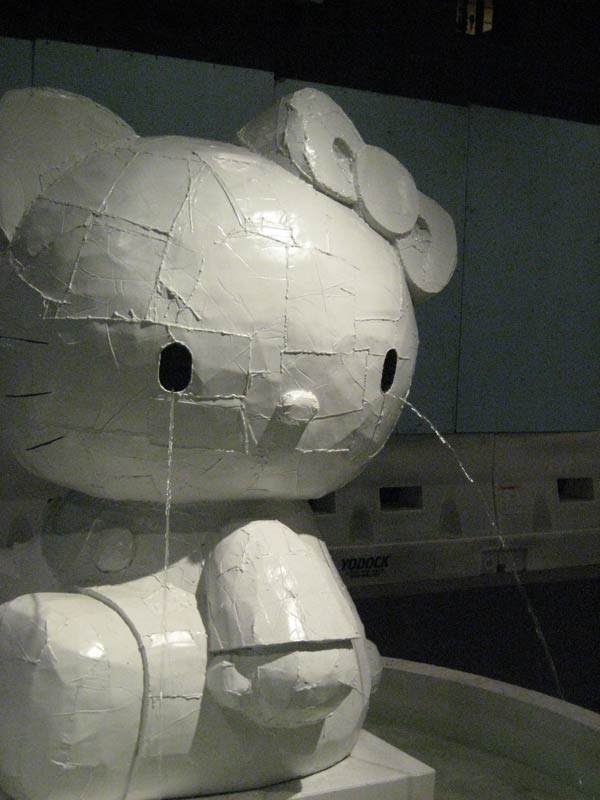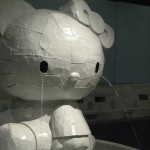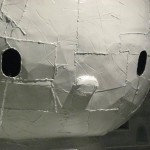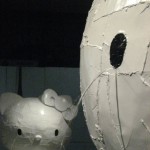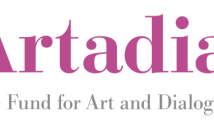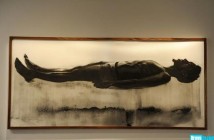NEW YORK, MOMA & THE FLâNEUR
"Adept of the joys of watching, connoisseur of empathy, the flâneur finds the world 'picturesque.'"
- Susan Sontag, "On Photography"
A couple of weeks ago I ended up spending an afternoon wandering around the Museum of Modern Art in New York. It was a hot, wet, muggy Saturday in September and I felt that what better way to enjoy air-conditioning than a museum (me and a zillion other people, of course). The place was packed, and I mean literally packed, full of people and I really don't think they were there just to see the Kirchner exhibition. This is not to say that these people weren't there to enjoy art or just escape the heat but I got the sense that it was more than that. People were at MoMA to walk the spaces like flâneurs. They were there to walk amongst the art. And, in this act of wandering and strolling the galleries, to visually accumulate the artwork. I noticed people navigating the galleries as if on a quest to claim each and every piece. Here a Picasso, there a Monet. Check. Check. Check. And it is in this moment of "acquiring" the art that one can observe the act of not caring about the work. By caring I don't mean that they are being careless with the artwork (although some are – insisting on touching and feeling the art despite the presence of the docents) but I mean that they aren't becoming emotionally invested in the work. It is simply a name on a list that can be checked off once one has seen it. However, I wonder just how this emotional connection can happen when the museum itself is so crowded that it is impossible to even think about the artwork in the increasingly unlikely event that you can even have time to view it without people shoving you forward like a wave, a wave of omnivorous visual consumption. And pity the poor soul who wants to linger with a work of art. You will be repeatedly surrounded by an upsurge in wanderers desperately clutching their audio devices guiding them to and fro in search of the next "Directors Favorite."
Now, granted, this is New York. It was a day full of crappy weather that drove everyone indoors (I believe this particular weekend's bad weather was due to the last hurricane finally reaching NYC). But it made me think of the way in which museums function. What is their purpose? They are designed to lead one through a space telling the visitor a story about art, art history, culture and what we collect. In the late 19th century museums were created as repositories and living tributes to the "great" wealthy of the time. MoMA's situation is a unique one in that it was driven purely by a desire to validate a particular kind of art: modern. Is this relevant? That is a conversation for another time. My exploration here is to look at how a museum is navigated and what people can get out of it. I am curious about the personal interaction one can have with art when one engages in an institution filled to the brim with lot of other people who are deep in their own desires and demands of the space.
Those of us experienced in the art world know that the time to visit a museum is at 10 AM on a Tuesday. Sure, there will be school groups and tourist but they move quickly through the space and almost always focus on the big "themed" show and the notable holdings like any and every impressionist painting or perhaps an artist that they are culturally familiar with. Anyway, one can actually look at work and experience it; think about it. In fact (not to go off on a tangent here but I feel like this might contextualize this writing properly) this was actually my first time walking through every gallery at MoMA. Shocking, I know but all of my prior experiences with MoMA didn't require my exploration. I was either there for a meeting, which meant I went to the offices, or I was there to see a specific piece of work. When I was working with MoMA it was during the re-building so the main museum was in Queens and I was at the Gramercy Theatre on 23rd street because that was were the film screenings took place. So, this experience was my very first as a "wanderer" of the museum. It was not pretty. Little did I know what I was in for when I suggested an afternoon at MoMA.
Okay, so it was crowded. People were everywhere. Even in the Kirchner exhibit. Which I must say was interesting but when you see a room full of his paintings of prostitutes you have to wonder about him. Did he just need to get laid? It borders on the obsessive. Interesting maybe but as the stances were all the same and the colors were all alike it came across as a really bad curatorial decision. It probably looked great on the drawing board when one is using slides but to see it installed and hanging you just think that Kirchner wasn't that good and he had a really weird fixation with prostitutes on the streets of Berlin.
Now, I though I had seen crowded galleries but walking through the Dali exhibition "Dalí: Painting and Film" I realized I hadn't seen anything yet. Which come to think of it, is the perfect review of the Dali show. I couldn't see anything. The crowds surrounding the artwork were at least 7-10 people deep. There was no way that one could look at the work let alone have a moment with it. Children were running and screaming, couples were making out and it was loud, loud, loud. There were two films that I had time to check out. One was a collection of clips from Alfred Hitchcock's Spellbound. Dali was recruited to film the dream sequences. This was fun and I think a little bizarre for people as there was maybe five people standing watching it. The other was Dali's aborted collaboration with Walt Disney. Disney commissioned him to make an animated short film a'la Fantasia. The film was never completed. Recently a group of Disney animators took his original sketches and the short reel he did produce and completed the film. It is stunning. These are really the only things I remember about the show. They were screening Un Chien Andalou (I only know this as I had to shove my way through the crowd gathered around the gallery) but I didn't linger to watch it. Been there one too many times.
Ultimately my time at MoMA left me with little appreciation for the artwork. There were moments. I got to see work in the collection that defined an artistic movement or two. But the experience of the art wasn't there. It was like being on a crowded street. While I am certainly happy about the success of the museum I often wonder about what it means. How can one actually be moved by a piece of art when surrounded, pushed and drowned out by the multitudes? You have to look at the art in between the prams and the photo-takers. Those incessant shutterbugs that not only have to see everything, they have to have a photo of it as well. They need proof that they were actually in the presence of the art.
This experience stands in contrast to one I had later that night. While out and about on the east side, we wandered over to a large collection of public sculptures. It was the Lever House Art Collection. They had installed a group of sculptures by Tom Sachs at 390 Park Avenue. Tom Sachs: The Bronze Collection was an amazing grouping of his medium-large scaled Hello Kitty-esque figures. Standing alone, at midnight, amongst his sculptures I enjoyed a quiet moment with a work of art. I had wandered into an experience that was much closer to Benjamin's concept of the flâneur. I was part of the city yet detached. I had my own quiet aesthetic moment. Far removed from the crowds and the chatter. Yet still consuming culture in a way that Benjamin might have approved of.
- Three views of Tom Sachs: Bronze Collection

